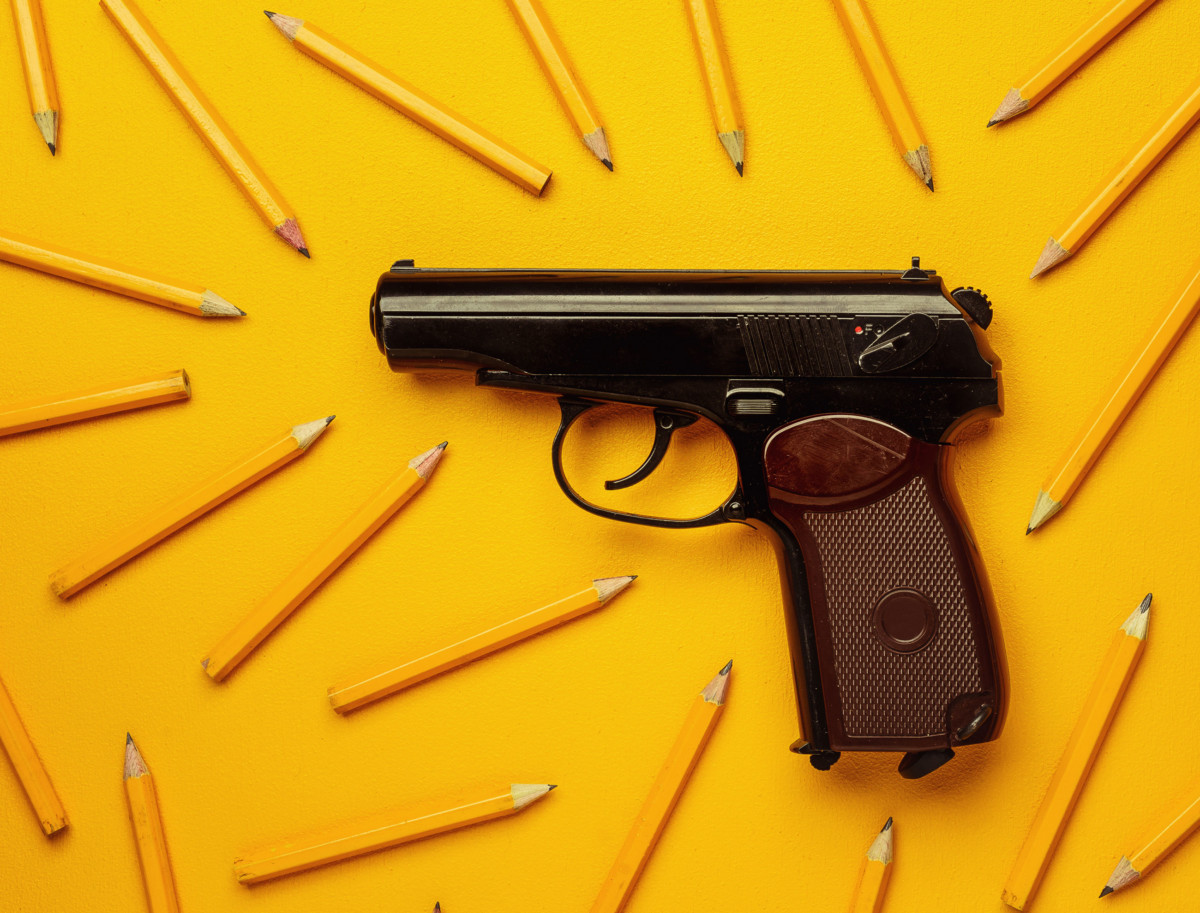After a school year marred by shootings, districts across the country have responded this year with calls for more “school resource officers” in classrooms. As a result, many students are returning to schools that feel more like prisons — and in fact form a quick pipeline to real prisons.
School resource officers, or SROs, are armed law enforcement officers who police hallways and classrooms. They often arrest students for minor disciplinary issues, as a new Institute for Policy Studies report called “Students Under Siege” explains. These officers are part of the larger school-to-prison pipeline that pushes students out of school and behind bars.
The very students SROs are supposed to protect are often the ones most harmed by them. In addition to referring kids to the juvenile justice system, SROs have been repeatedly filmed violently mistreating black and brown girls in particular.
That’s why many students say SROs aren’t the answer to school shootings.
At the March for Our Lives, Edna Chavez, a student from Los Angeles, spoke out against adding more SROs: “Instead of making black and brown students feel safe,” she complained, “they continue to profile and criminalize us.”
Chavez called for a different approach. “We should have a department specializing in restorative justice,” she said. “We need to tackle the root causes of the issues we face, and come to an understanding on how to resolve them.”
Restorative justice (or RJ) treats incidents in which people are harmed (like, say, school fights) as requiring healing rather than punishment. It focuses on the actual harm that occurred and the need for healing, rather than on the breaking of a rule.
When an incident arises, the parties come together for a restorative circle that includes students, staff, community members, and a restorative justice practitioner. They address the harms together and try to arrive at a solution.
A growing number of school districts nationwide, from Oakland, California to Washington, D.C., are implementing these practices.
When there’s a conflict, participants meet to discuss the circumstances, identify the support they need, and consent to a healing process. They talk until they arrive at a mutual understanding of why the harm occurred and agree on steps toward addressing it to everyone’s satisfaction.
Ta-Biti Gibson, a restorative justice coordinator in Oakland, told NPR how restorative justice changes the way students approach conflict in his school: “Instead of throwing a punch, they’re asking for a circle, they’re backing off and asking to mediate it peacefully with words.”
When two students got into a fight at Gibson’s school, the students “circled up” and agreed to write and put up anti-bullying posters, participate in after-school service, and do joint morning announcements with tips on how students can get along better.
At the Duke Ellington School of the Arts in Washington, DC, this restorative process is led by the students themselves.
By using a restorative approach, the students aren’t only held accountable for their actions — they get an opportunity to contribute to a safer and more inclusive school community. This opportunity is missed when SROs get involved.
Resource officers are a resource only by name. What would it look like if our schools were actually resourced?
In a well-resourced school, students are safe because staff can invest in their well-being. “Accountability” isn’t separated from a student’s ability to heal, thrive, and uplift the whole community. And students don’t wind up in jail or with a record for routine school incidents.
One SRO can cost up to $97,000. Instead of hiring officers that see students as criminals, schools can use that money for real school resources — mental health workers and restorative justice practitioners, to name a few — who build students up rather than push them out.
We’re not backing down in the face of Trump’s threats.
As Donald Trump is inaugurated a second time, independent media organizations are faced with urgent mandates: Tell the truth more loudly than ever before. Do that work even as our standard modes of distribution (such as social media platforms) are being manipulated and curtailed by forces of fascist repression and ruthless capitalism. Do that work even as journalism and journalists face targeted attacks, including from the government itself. And do that work in community, never forgetting that we’re not shouting into a faceless void – we’re reaching out to real people amid a life-threatening political climate.
Our task is formidable, and it requires us to ground ourselves in our principles, remind ourselves of our utility, dig in and commit.
As a dizzying number of corporate news organizations – either through need or greed – rush to implement new ways to further monetize their content, and others acquiesce to Trump’s wishes, now is a time for movement media-makers to double down on community-first models.
At Truthout, we are reaffirming our commitments on this front: We won’t run ads or have a paywall because we believe that everyone should have access to information, and that access should exist without barriers and free of distractions from craven corporate interests. We recognize the implications for democracy when information-seekers click a link only to find the article trapped behind a paywall or buried on a page with dozens of invasive ads. The laws of capitalism dictate an unending increase in monetization, and much of the media simply follows those laws. Truthout and many of our peers are dedicating ourselves to following other paths – a commitment which feels vital in a moment when corporations are evermore overtly embedded in government.
Over 80 percent of Truthout‘s funding comes from small individual donations from our community of readers, and the remaining 20 percent comes from a handful of social justice-oriented foundations. Over a third of our total budget is supported by recurring monthly donors, many of whom give because they want to help us keep Truthout barrier-free for everyone.
You can help by giving today. Whether you can make a small monthly donation or a larger gift, Truthout only works with your support.
